
Happy Midsummer!
If you’re wondering how we celebrate midsummer 😉.

Happy Midsummer!
If you’re wondering how we celebrate midsummer 😉.

And so it is that most people have no idea how beautiful the world is and how much magnificence is revealed in the tiniest things, in some flower, in a stone, in tree bark, or in a birch leaf. The grown-ups, going about their business and worries, and tormenting themselves with all kinds of details, gradually lose the perspective for these riches that children, when they are attentive and good, soon notice and love with their whole heart. And yet the greatest beauty would be achieved if everyone remained in this regard always like attentive and good children, simple and pious in sensitivities, and if people did not lose the capacity for taking pleasure as intensely in a birch leaf or a peacock’s feather or the wing of a hooded crow as in a mighty mountain or a splendid palace. What is small is not small in itself, just as that which is great is not—great. A great and eternal beauty passes through the whole world, and it is distributed fairly over that which is small and that which is large; for in such important and essential matters, no injustice is to be found on earth.
Rainer Maria Rilke (1875 – 1926) was an Austrian poet and novelist.
To read more quotes, click here.

A few days ago, a friend reached out to me for help. She was having a hard time after one of those unexpected things life likes to throw at you.
What did you do, she asked me? I used the ostrich method, I wanted to tell her. Don’t think about it, don’t think about it, don’t think about it. It is, I admit, not a suitable method of tackling life.
Instead, I told her about acceptance. Strive for that kind of calm, peaceful mind that acceptance offers, but that’s so hard to achieve. Realize that life is what it is, and no amount of wishful thinking can make it otherwise. Things change, as much as we don’t want them to; people change, too, and catastrophes happen. Change and pain are constant companions in this world; the best one can do is accept them. Not surrender, but accept it. It is what it is. We spend too much time and energy refusing to accept things as they are and trying to change what we cannot.
I told her about the Anonymous Alcoholics’ prayer; it’s a short but powerful reminder of how to handle life with everything it brings. (And before AA, the Stoics preached this, even though they didn’t really preach. Hence, my interest in Stoics).
The Serenity Prayer
God, grant me the serenity to accept the things I cannot change,
The courage to change the things I can,
And the wisdom to know the difference.
Yeah. Work in progress.
I realized that I was trying to help her as much as myself.
I try to remember Mark Twain’s words: “I’ve had a lot of worries in my life, most of which never happened.” The Stoics (Seneca) said that we suffer twice, once when we think about something that could happen and then again when it happens.
It’s enough to think about the things I was worried about only a few years ago, to say nothing about my youth. Most of them, if any, never happened, of course. Or they weren’t the catastrophes I thought they’d be. Instead, you have unexpected stuff thrown at you. (Think the last four years!)
So now I’m trying to make the best of what I have, which is not negligible; enjoy life because you never know what’ll happen in the future. I shouldn’t mar the lovely life we have right now with thoughts about what might happen. Then, I would have suffered twice.

(…) having an enviable career is one thing, and being a happy person is another. Creating a life that reflects your values and satisfies your soul is a rare achievement. In a culture that relentlessly promotes avarice and excess as the good life, a person happy doing his own work is usually considered an eccentric, if not a subversive. Ambition is only understood if it’s to rise to the top of some imaginary ladder of success. Someone who takes an undemanding job because it affords him the time to pursue other interests and activities is considered a flake. A person who abandons a career in order to stay home and raise children is considered not to be living up to his potential-as if a job title and salary are the sole measure of human worth. You’ll be told in a hundred ways, some subtle and some not, to keep climbing, and never be satisfied with where you are, who you are, and what you’re doing. There are a million ways to sell yourself out, and I guarantee you’ll hear about them. To invent your own life’s meaning is not easy, but it’s still allowed, and I think you’ll be happier for the trouble.
Bill Watterson (b. 1959 -) is an American cartoonist and the author of the comic strip Calvin and Hobbes. Watterson talked about the difference between ambition and happiness in his speech ‘Some thoughts on the real world by one who glimpsed it and fled’, Kenyon College – 1990
To read more quotes, click here.

There is, I hope, a thesis in my work: we may encounter many defeats, but we must not be defeated. That sounds goody-two-shoes, I know, but I believe that a diamond is the result of extreme pressure and time. Less time is crystal. Less than that is coal. Less than that is fossilized leaves. Less than that it’s just plain dirt. In all my work, in the movies I write, the lyrics, the poetry, the prose, the essays, I am saying that we may encounter many defeats—maybe it’s imperative that we encounter the defeats—but we are much stronger than we appear to be and maybe much better than we allow ourselves to be.
Maya Angelou (1928–2014), was an American poet, storyteller, and autobiographer.
To read more quotes, click here.
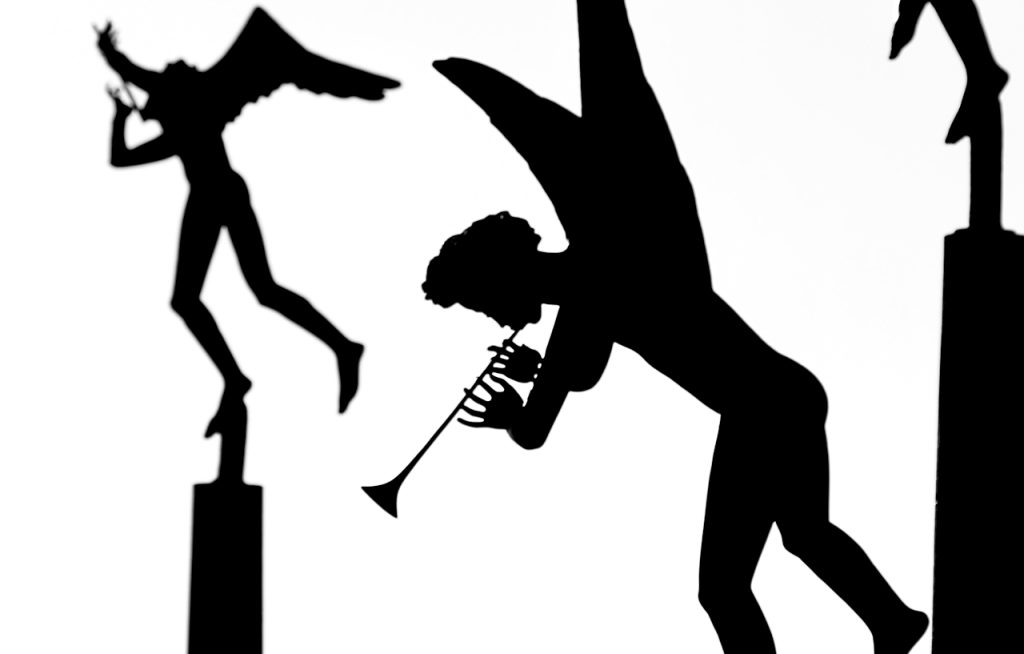
I’m always wary of miracle shortcuts, quick fixes, and no sweat-solutions. The human brain is a sucker for them, and I’ve learned the hard way to avoid them. There are no such things as a free lunch.
So, when Jim Loehr, the American performance psychologist and author, told Tim Ferriss (in this podcast) about a simple exercise that has profoundly changed the lives of thousands of people, I was, you know, wary. What, write down eight words, and then another eight words? That’s it? What could possibly be that mind-blowing?
Well, it turned out he was right. How world-shattering it depends very much on who you are and how you live your life.
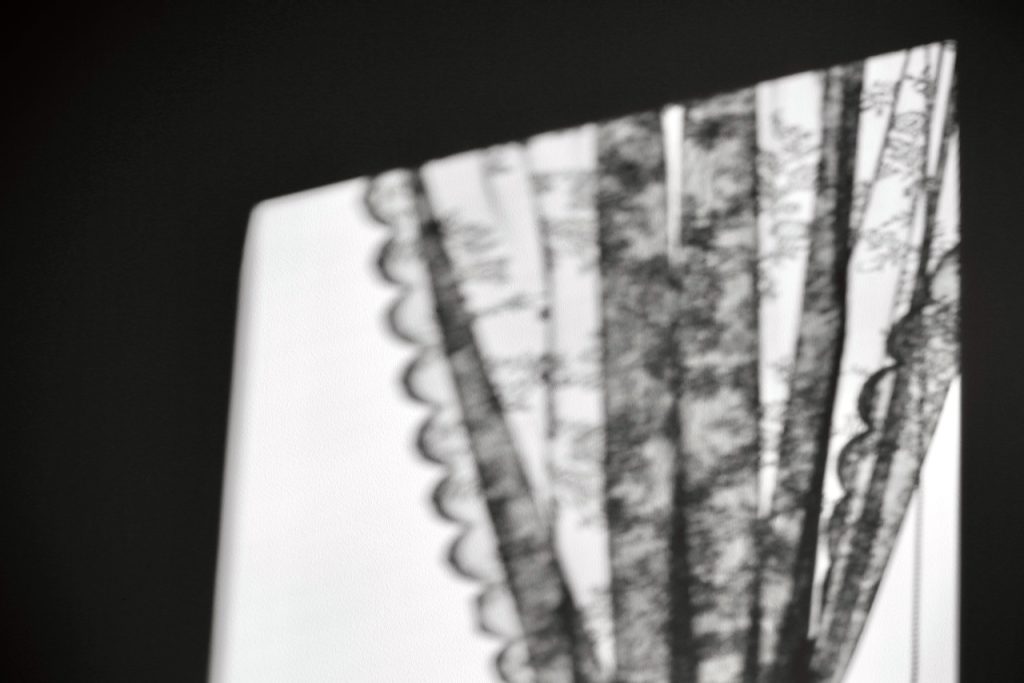
The Exercise
1) Think about who you are when you are the most proud of yourself, when you are at your very best. Especially in stressful circumstances, when you faced considerable challenges and somehow managed to overcome them and be the best you could be.
Write down the six to eight words that would best describe you at those moments. Take five minutes to reflect on them.
Please stop here and do this, it takes only five minutes.
*
Done? Read on.
What Loehr learned through this first step of the exercise: most people come up with almost the same things. And these are not the things people chase, like making a lot of money, closing a huge deal, or winning titles. Instead, they talk about being kind, compassionate, fully engaged with others, and so on. So more moral and ethical things rather than material or external success.
2) Now write down six to eight words that you would like inscribed on your tombstone. These words would actually reflect who you truly were, representing who you were when you were here. What would you like inscribed most importantly in the highest priority on your tombstone?
Again, take five minutes to reflect on them.
*
Ready? Read on.
What Loehr learned through this step of the exercise: the list was almost identical for all people participating in his workshops.
People would write things like “loving father”, “loyal friend”, or “an optimist”. No one would write, “I made CEO of a Fortune 500 company” or “I won this title and this title”.
What they were actually referencing was the connection to other people. This is how they wanted to be remembered. A person who was kind, loving, and loyal, an optimist who brought joy to others. That was what mattered.
3) Compare who you are at your best and how you want to be remembered when you’re gone.
Very likely, you are right there. The two lists are similar, and they contain few, if any, of the external status markers.

The Hidden Scorecard
We spend our lives chasing extrinsic measures of success, even though we have this hidden scorecard inside of us. We work hard and sacrifice a lot of things and think that we would feel better about ourselves as soon as we’ve closed that deal, bought that house, or made director or VP.
But when we evaluate our life, we use this hidden scorecard that contains none of those things.
This is why focusing on external success measures only (better job, a bigger house, etc.) leaves us unsatisfied and always wanting more. As soon as we reached our goal, as soon as we’ve got that promotion or bought the house, the euphory, and joy of that event vanishes after a short while. We’re feeling no different than before, and we start chasing the next goal, and the next one. It never ends.
Does it mean that we shouldn’t strive towards certain goals in life, like finding a better job or a nice house? Not at all.
We should work both scorecards; become aware of the hidden scorecard, and ensure that we’re living a life with intention and aligned to those moral and ethical values. This brings a more lasting feeling of peace and contentment.
Even if we encounter setbacks and failures in reaching our external goals, living a life aligned with our values will help us get through those moments. It puts things in perspective.
How much would this customer who ruined your day or the boss who didn’t think you deserved a promotion matter in 20, 30, or 40 years? When you look back on your life, what would matter?
Becoming a CEO, winning the “Sales Rep of the Year” three years in a row, always having the latest car model or iPhone? Or the time spent with your family and your friends, the quality of those relationships, the joy of spending time with like-minded people sharing the same hobby, the rewarding hard work on your charity?
Focusing too much on the external scorecard and ignoring the internal one can have dire consequences. Getting alienated from family and friends, for instance, or depression.

Evaluating Your Life
Bronnie Ware, an Australian nurse who worked in palliative care, wrote a book called The Top Five Regrets of the Dying. Tending to dying people, she noted that the things people regretted when looking back at their lives were those found in that hidden scorecard. They didn’t regret that they didn’t work harder or made more money, or that they didn’t make CEOs.
These were the top five regrets people had.
This may sound morbid, but since we’ve already tackled the tombstone … if you knew that you only had a short time to live, what would you do? What would your priorities be? Would you work harder and longer to attain your goal (become CEO!) or spend time with your family?
Deadlines have that quality of putting everything in sharp focus and clarifying priorities. Death is the ultimate deadline.

Conclusion
Allowing time for reflection and putting things into perspective is self-care. Give this exercise a try. Congratulations if you live your values and gain nothing from this exercise but confirmation that you’re on the right track! But if you’re not, you have so much to gain!
Good luck!
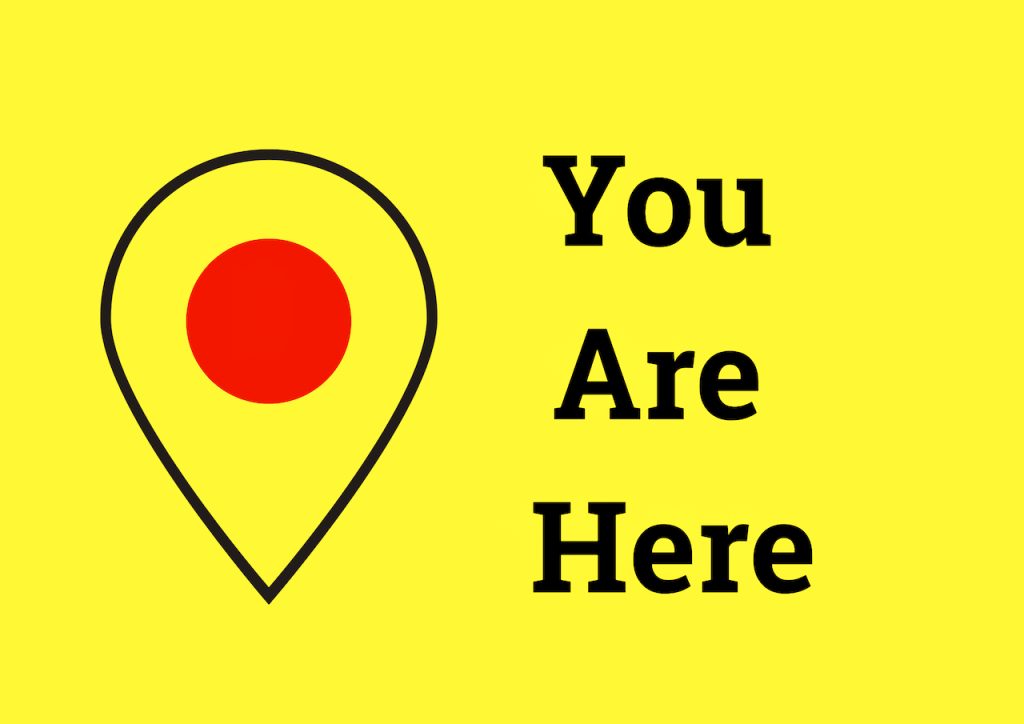
It’s that time of the year, so I’ve just completed my annual personal review. This is something I do every year, although in a slightly different form. I was thinking about publishing it here, but it felt too personal. I couldn’t. Maybe next year.
(I use this Year Compass form which is excellent; it supports multiple languages, and you can choose whether to complete it online (PDF) or print it and work on the hard copy. I recently found this one which seems good, too. I had already completed this year’s when I saw it, but I’m thinking of combining them next year, taking the best of both in one customized version.)
In the meantime, I thought it might be worth sharing some of the insights of this second annus horribilis. I think we all hoped that things would go back to some kind of normal this year, especially with vaccines available. But, unfortunately, it seems we were mistaken.
No matter, no matter; new year, new prospects, I always say, the ever optimist. So let’s get to it, shall we?
This year, I struggled a lot with attention, or rather, the lack of it. Not being able to focus when working on a book (or doing anything, really) is stressful and anxiety-inducing. As I mentioned elsewhere, I had already reduced social media and news intake drastically but, obviously, not enough. So, I did an app audit and reduced the number of apps on my smartphone, deleting both the ones I seldom used and the attention stealers (you know which ones, don’t you?). I also took a time-out from social media (I’ve been sober for six months now!) and stopped reading the news. They have a way of trickling through anyway (especially the bad ones), and, fear not, I haven’t missed the news of the first woman to become Prime Minister in Sweden or the Omicron variant. I pruned blogs and newsletters as well, keeping a few core ones only (Austin Kleon, Seth Godin, Oliver Burkeman, Mason Currey, for instance). No TV except on Fridays and Saturdays.
And yet, I struggled. Then it dawned on me that I hadn’t meditated or done any yoga in some time. Like, in a long time. A very long time. So, I’ve just taken up mediation and yoga again, and I’m almost back on track! The wild monkey mind is not easy to tame, but I feel good about where I am at the moment.
If you haven’t meditated before, Pema Chödrön’s wonderful book Meditation: How to Meditate is an excellent place to start. It’s short and simple and beautifully written.
As for Yoga, Adriene Mishler has this wonderful YouTube channel called Yoga with Adriene, where you can pick and choose from a variety of yoga sessions, and they’re all free. If you don’t know where to start, she has a series of videos for beginners.
This is by far the most important lesson of the year. It’s incredible how these practices impact my mind (and body), something I tend to forget. I’ve now included yoga and meditation in my daily tracker to make sure I don’t fall off the wagon again.
Partially related to the above. Whenever I could, I would nap after lunch since in high school (I’m not kidding). I don’t seem able to function optimally for a whole day without some rest. I don’t necessarily have to sleep, but I do need to lay on the bed for half an hour someplace dark and quiet. I did this at work, too, whenever I didn’t have any meetings or calls around lunch. I would eat a quick lunch then go and lay down for 30 minutes (the perks of working from home, long before Covid-19 taught the world how to).
What did I do this year, knowing all this? In my search for efficiency, I started skipping my naps. More time for me and my book, yay! Only it became “nay”! The result was that I had more awake time, but I was too tired to do anything worthwhile (my house shines, though, there’s that). If naps were good enough for Churchill and Einstein, I guess they’re good enough for me, too. And I’m not alone to think that. I’m back to my post-lunch nap now, together with my cat, who seems to be the wiser of us.
(By the way, I love that nap line from “The Darkest Hour” movie when Churchill is asked to meet the King at 4 pm, and he replies: “I nap at 4.” I was SO tempted to tell that to my boss sometimes when he wanted to have a meeting at 1 pm). There are so many great lines in that movie, brilliantly written by Anthony McCarten; here are a few more.)
I think of myself as a person who values friendship and friends; in fact, being a good friend is one of my core values. I thought I was a good friend; I know I’ve tried. But how was I a good friend?
If we take birthdays, I would always make sure to send a message to a friend on their birthday. Note I said “send a message” (as in DM), not send a card or make a phone call. We’re all busy, I was busy, and I thought my friend was busy too, so a short and quick message to congratulate her was an efficient way of dealing with that.
But was that a good way of keeping in touch? Since many of my friends are scattered on four continents now, social media is the only way to keep track of what’s happening in their lives. I could see their updates and would occasionally comment on something, and then I’d, of course, send a DM on their birthday. Even at Christmas! I was a good friend, wasn’t I? Wasn’t I?
I thought about this and realized it was a superficial way of being a friend, more like a social obligation. So this year, I’ve started creating personalized birthday and holiday cards (now you know where that Freebies section came from) and writing e-mails with a few more lines than “Merry Christmas”! Handwritten letters would be much nicer, of course, but I need to be realistic. I feel that what’s important is writing more than a DM and more than once or twice a year. And making phone calls as we used to, despite the logistic challenges of different timezones.
Does this make me a good friend? I don’t know; you’d need to ask my friends. But I think I am a better friend at least.
As I’m planning 2022 now, I’ve added reminders in my calendar to reach out to friends every now and then, not only during holidays.
If you liked this post, share it on your preferred social network or forward it to a friend.

It’s so easy to think, “I’ll make an exception, I’m so tired/busy/stressed” when you skip a planned activity or something you wanted to do. You still mean to eat right, or exercise, or write at least 300 words every morning, of course. You just skip today. It’s OK. You’ll resume tomorrow. Not a biggie.
The thing is, this is not an exception. It’s an excuse. An excuse not to do something that makes you uncomfortable or anxious or that scares you—a reason to take the easy way out.
It’s an exception when you have to skip the gym to take your daughter to the emergency room with a sprained ankle. It’s an exception when you sit down to write your daily quota, and your computer eats your document and its backup. It’s an exception when it’s outside your control.
An excuse is not an exception; an exception is an emergency.
If you liked this post, share it on your preferred social network or forward it to a friend.
My earlier post, about the life-altering decision to follow my heart and do what I love, seems to have struck a chord with many people. However, changing career, especially from a successful one to a more uncertain one like starting your business or becoming an artist, can be daunting. Fear sets in, and fear can be paralyzing. We know that we should act, do something, but we don’t.
“Why don’t I share what I did ?” I then thought. So here it comes, my career change guide! I’ve outlined below the steps I’ve taken once I’ve decided to leave the corporate world.
Examine your motives. Take some time to reflect on why you’re thinking about such a major change in your life. For example, are you happy with the field you work in and the company, but your boss is a pest? In this case, it would be more helpful to change roles and work for somebody else.
Or you’re overwhelmed, and tired, and stressed out? Stretched at maximum and beyond, even though you love what you do, and your boss is an angel? Changing your career may not help if you don’t learn to manage your time and stress level.
The point? You must be doing this for the right reason.
It would be best if you went into a direction you’re interested in, rather than running away from something, like a bad boss. You’re just postponing the inevitable.
Find your call. Think about what fills you with energy during the day. What did you enjoy you doing as a kid? What do you do when procrastinating? What activities absorb you so completely that you forget space and time? All these are good indicators of the things you should be doing.
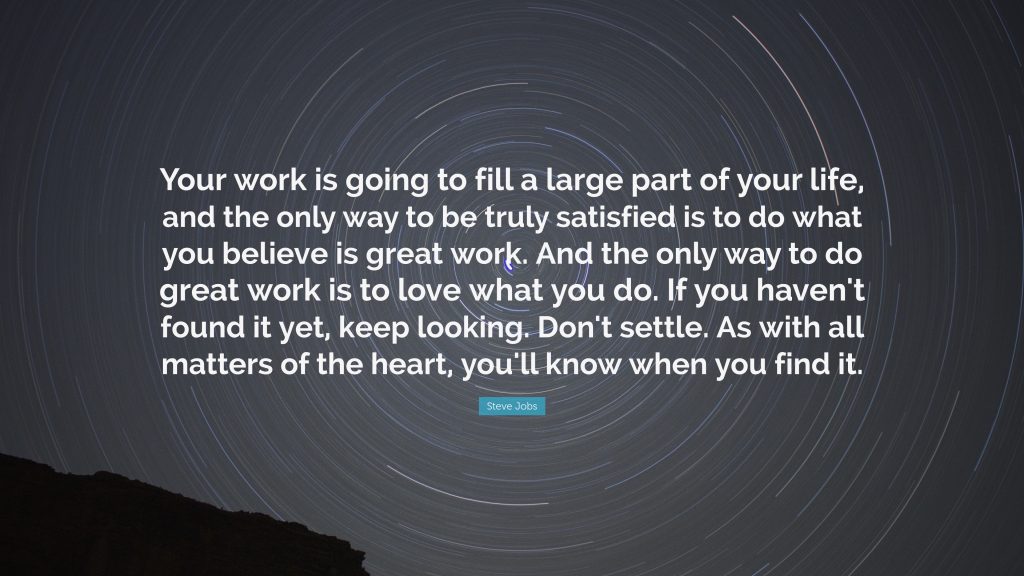
When I ransacked myself, I knew in my heart what I was burning to do. Art. Easy.
OK, so you’ve found your calling. You want to start a jewelry brand. A garden services company. You want to dedicate yourself to helping people in need and run a foundation.
Whatever it is, don’t jump to the fun part like creating a fancy website (it’s so much fun, I know!) or ordering new business cards. You’d be setting yourself up for failure.
By failing to prepare, you are preparing to fail. - Benjamin Franklin. Share on XInvest some time to research your new field. You could, for instance, join professional associations and look up more information on the Internet. Attend meetings and join relevant groups on LinkedIn or Facebook. Sign up for alerts and newsletters. Set aside some daily search time and gather information.
Connect with people. This is key. For example, once I started getting serious about photography, I joined the Swiss Camera Club on Facebook and went to a photo walk in Lucerne to meet other fellow photographer-wannabees. I even got a photo included in the local news coverage of the event.
Talk to your mentors, talk to friends, talk to your neighbors, talk to your delivery man – they all can offer insights and different perspectives. Then, you can prepare a 30 seconds elevator pitch outlining what you’re planning and asking for input and advice.
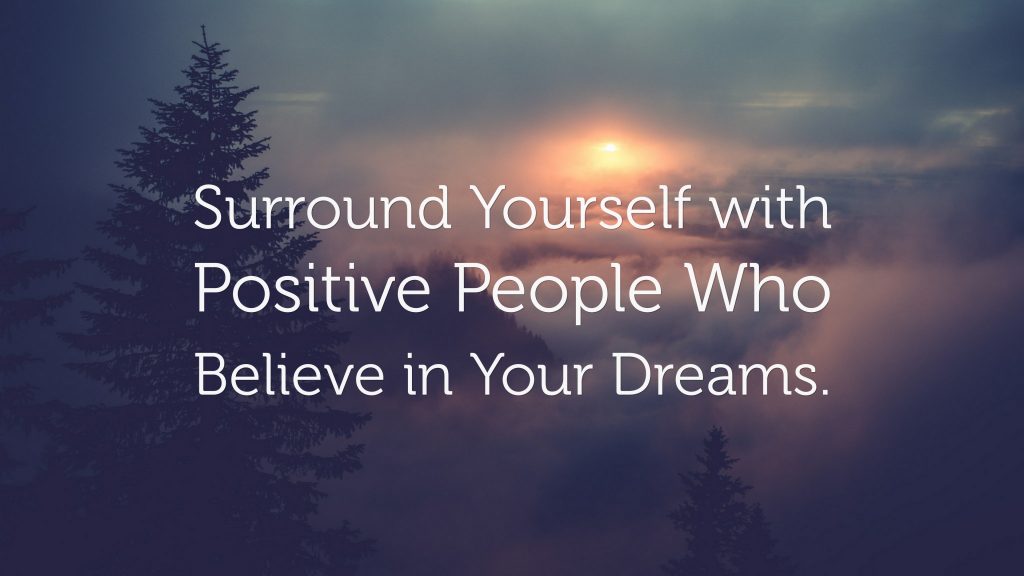
Don’t be shy and put out feelers in your network, both in real life and on, say, LinkedIn. Don’t be afraid to reach out to people; most people are glad when someone is interested in their particular field and expertise and are more than happy to help.
Try it out! You can start on a small scale during your leisure time, weekends and test your approach as I did. I’ve built a website, created a professional Facebook side, joined Twitter and Instagram, all during evenings and weekends – and then started posting things, commenting on other photographer’s work in their social media, and following photographers that inspired me.
There’s no way around this: you need to think about money. A major career change is stressful, and financial uncertainty it’s likely to top the list.
Make an honest review of your financial situation and decide what you need to do to survive during the time your new career takes flight. Don’t assume money will come on the first day if you want to start your own company. It won’t. If you feel you don’t have the skills for this or simply want a second opinion (it’s an important decision, after all) – seek professional advice. It’s an investment well worth the money. Or ask someone you know and trust who has a successful track record in personal finance.
Manage your debts. Ideally, you shouldn’t start your new life with debts. Clear any debts if possible or use help to create a debt management plan. For example, a mortgage is fine as long as you are confident you can keep up with the payments. Don’t take any loans, so you’d be in debt before you have even started. This brings me to …
Use free resources. Don’t invest a lot in the beginning; you can do that later when you feel confident that things are going well. There are many free options out there to get you started – you only need to do an Internet search. For instance, you can start with a free WordPress site, leverage the free themes and plugins; and look up copyright-free images and sounds. Later you can host in on your own domain if you wish, add more fancy plugins, and an online shop.
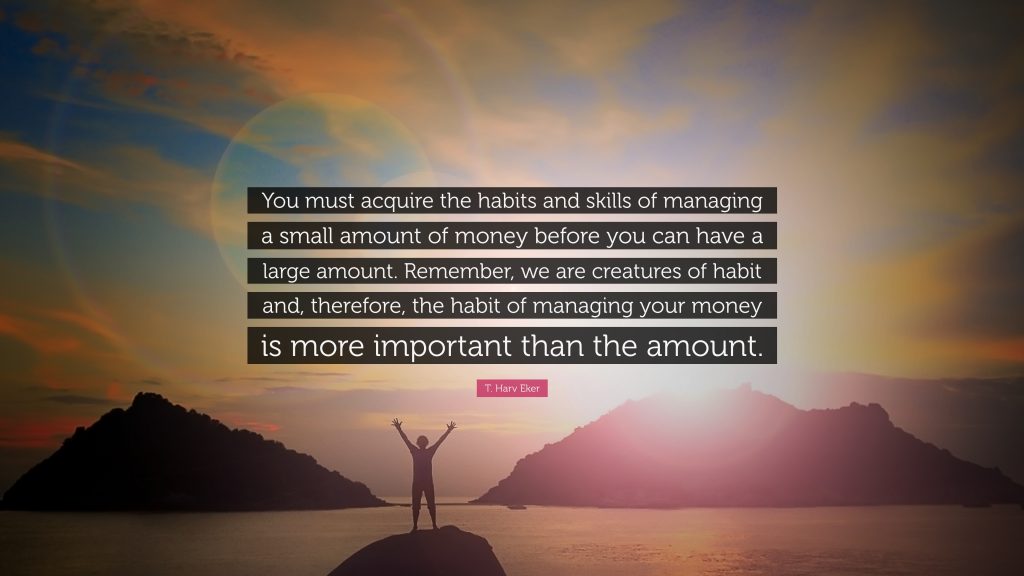
Save first, spend later. I would also recommend having a six to twelve months buffer saved. Things will happen, as things tend to do in life, and you want to be prepared when that happens. For example, say your heating system malfunctions during a frigid winter. You’d have no choice but to fix it then – you cannot wait until spring when your royalties come in. Knowing you have a buffer would alleviate the stress of the unknown.
Investigate options. Research whether there are any grants or scholarships you can seek. This way, you can get some funding without getting in debt.
Think about what you’d be gaining by earning less money. Things like more time for your family, a better work-life balance, a sense of peace, and personal fulfillment.
You may think that you’re starting from scratch in a new career. After all, you’d be doing something completely different. Right?
Wrong!
You have work experience in your current job. As a result, you can successfully apply some of the skills in your new career.
Do a skills inventory. What are you good at? What did you learn in your career? Examine your past and current roles, as well as any volunteer work. It could be communication, influencing people (all those corporate meetings selling new projects to executives, heh?), finance, marketing, or tech support.
Say you work in marketing and want to be a photographer. You could use your marketing knowledge and experience to promote your photos. My friend’s husband, who did work in marketing, was inspired by my side photo project (at the time) and started a commercial photography business. Successfully I may add, the guy is a marketing wizard.
I can't say it enough that learning how to learn is one of the greatest skills anyone can have. - Mark Cuban Share on XAt the same time, an inventory will show you what skills you’ll have to learn. For example, maybe you’re good at designing jewelry but have no idea how to transform the raw silver into the ring or the bracelet you can see in your head or put on paper. Therefore …
Bridge the skills gap. Need a course? Search the Internet. There are plenty of free online courses, YouTube tutorials on basically everything (learning Japanese? training your dog? how to succeed in business?), and nerd blogs answering the very question you’re asking. You could also enroll in an evening course or one-day seminars or workshops.
Sign up for courses while in your current job. Communications skills, project management, or influencing without authority can be of help in any career.
By now, you should have a pretty good understanding of what it is that you want to pursue (for the right reason), knowledge about that new field and people who can help on the journey, the financial impact, what you know, and what you don’t.
Are we ready then?
Not quite yet. Just bear with me for a bit longer.
Now that you have gathered the information, you need to create a plan. This will be your roadmap for the journey in front of you, the beacon of light guiding you along the way.

Make it a written plan. Your head’s for having ideas, not for holding them as “Get Things Done” David Allen puts it. Do you need any new skills (identified above)? Then plan for learning as well. Having a written plan makes it more real, reminds you of your commitment, and helps you track progress.
Involve your inner circle. You may want to involve your partner, close family, and maybe a few trusted friends as this will likely impact them too. Listen to them and consider their input. But in the end, follow your gut. Don’t let others dictate your way.
Don’t burn your bridges. Leave your job graciously. Hand over your responsibilities and train your replacement as you wish someone else would do it for you were the roles reversed. It’s tempting to focus on your new career and do the bare minimum before leaving. In two words: Don’t! It’s simple courtesy, and it costs nothing. Even more so if you’re not parting ways amicably, be the bigger man (or woman). You never know what happens, and you may need a way back. This is why you should …
Have a backup plan. Many people don’t want to think about failure, so they start the journey into the unknown with no plan in case things go south. Don’t do this! You know how they say, “Better safe than sorry.” It’s likely not what you want to think about, but it’s an easy investment in your future self. This doesn’t necessarily mean you’d go back to your old job, but for instance, you could come back as a part-time consultant to wait out the bad times. In the same spirit, keep up to date on what happens in your old field, renew certifications if needed, and so on.
You just need a good plan and then a backup plan! - Katherine Kelly Share on XStay in touch. In all that excitement and thrill often brought by new beginnings, you may forget to keep the connection to your old world alive. Your former colleagues or business partners may not necessarily be part of your everyday now, but they can be your ambassadors or mentors. They can testify about your skills and provide introductions or advice. You could invite people for lunch, congratulate them on an anniversary or promotion, and send them tips about things you know they’re interested in (send me any good tips on how to get rid of snails in the garden, and I’ll be your friend for life!). Do this regularly, and not only when you need something – people see through that.

Be present. Maintain a presence and be active on professional networks, e.g., LinkedIn, by appreciating and commenting on your connections’ activities and sharing articles on topics of general interest such as time management or creativity. Make it easy for people to remember you. For example, say that one of your former colleague’s cousins works at a fashion magazine, and she is looking for some hobo jewelry for a fashion feature photo shot. Your colleague now remembers that you left to start your own jewelry business; s/he’ll pass on your name to his/her cousin. It may or may not work out in the end, but it’s the first step. Maybe your jewelry is not hobo enough for this shoot, but s/he may like it and reach out to you in the future.
Embrace your fear. All beginnings are a thrilling mix of excitement and fear, like a rollercoaster ride. Don’t let that fear overwhelm you. You know you are doing the right thing. Trust. Have faith. True success is being afraid and still doing it anyway. It’s OK to feel fear; I would be concerned if you didn’t. But don’t let that fear stand in your way. Acknowledge it (I am afraid of this unknown), look at it objectively (it’s normal to be afraid when you’re doing something new), and then act.
The meaning I picked, the one that changed my life: Overcome fear, behold wonder. - Richard Bach Share on XFeel the love. Know that you are never alone. There’s always help when you need it – but only if you ask for it. Reach out to people in real life and online; ask questions when you don’t know how to do something, or things go wrong, and you need a solution. Talk it over with a friend. Reach out to formal support groups or organizations. Where there is a will, there is a way.
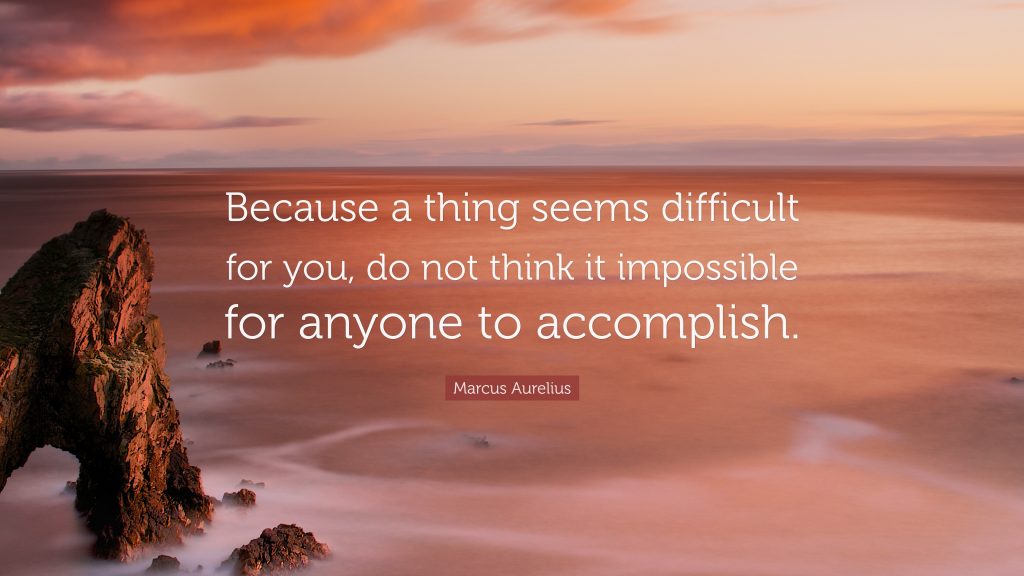
Overcome the biggest obstacle. You. Very often, we are our own saboteurs. We compare ourselves to others, and not in our favor. We measure ourselves and find ourselves lacking. We don’t believe we have anything to contribute. We don’t believe we have what it takes to succeed. We find ourselves incapable of acting, frozen like reindeer in the headlights.
So … I’m giving you a push. Don’t just read this article; act on it. Now. Good luck!
If you liked this post, share it on your preferred social network or forward it to a friend.

It’s been snowing steadily these past weeks, fluffy snowflakes dancing lazily in the air. And every time it happens, I run to the window, filled with the same wonder as when I was a kid.
“It’s snowing!” I tell my husband. He looks out, smiles, and goes back to his book. “It’s snowing!” I tell Minette, and she stares back with that sphinx look that cats use to convey how silly humans are. You can almost see the shake of the head, the soft muttering, “Humans.”
I want to run out, make snow angels in the garden and build a snowman. I would have done it too, but for the lack of a carrot. A carrot! A carrot! My kingdom for a carrot! After all, what’s a snowman without a carrot for the nose?
My husband tells me this snow is no good for building snowmen; it’s too fluffy and powdery. Pity. It would have been such a fine snowman. I have the perfect scarf for it, a mohair thing in bold blocks of color, bright red, buttery yellow, sky blue, green, and orange wool fireworks on a cold man. The orange block would have matched the nose—the one I don’t have.

I shovel the snow around the entry and create a small path to the mailbox. I’m cautious not to step outside it. I love looking at all that pristine white blanket covering the ugliness of the world.
Maybe that’s why I love freshly fallen snow. I love the purity of the world. I love the silence pierced only by the call of a blackbird or the rhythmic toc-toc-toc of the woodpecker in the back yard. The occasional passing car makes only a muffled sound, dying quickly away. Toc-toc-toc.

The snow continues to fall in a hypnotic rhythm. I’m thinking of marine snow. Such a poetic name for the aquatic detritus slowly falling from the sea surface to the seabed that can be visually likened to snowfall. I’ve read somewhere that fish can produce light in the eternal darkness of deep seas to defend themselves. They’d make this bright flash of light to blind their attackers, and they’d use the ensuing confusion to flee. Nature will find a way. It always does.
I walk to the window and look at the massive oak tree in the backyard. No squirrels. It’s probably too cold for them to venture out. Snow too deep.
I can see deer tracks in the garden, where they have trotted during the night. A hare’s too. They’re quickly fading, covered by white fluffiness.

There are two fawns born in our backyard last spring. They were minutes old when I found them in the tall grass around the big birch tree, barely able to stand. The mother stood a few meters away, watching me anxiously. The little ones were so trustful, looking big-eyed at this new thing – the world. Imagine feeling the warmth of the sun for the first time. The low buzz of the insects in the grass. The calls of the birds.
I had gone there to check on the compost, and I almost stepped on them, well-hidden in the grass. I backed in surprise, not trusting what my eyes were telling me. I snapped a couple of pictures with my cell phone (the best camera is the one that you have with you) and then went back to the house, leaving the new mother to take care of her babies. They were gone in a few hours.
I guess they’re not fawns anymore; they’ve grown so much this past year! Last night they munched on the remaining pumpkins, leftovers from Halloween. They were completely hidden under the blanket of snow, of course, but they knew where they were and dig them out.


And during the time it took me to write this post, they came again, going back and forth in the garden, looking for sunflower seeds. Life.
I return to my desk with a sigh. I have to get back to work. A new chapter awaits. The snowflakes swirl around, racing each other to the ground.
I make a mental note to buy carrots. And more sunflower seeds.
If you liked this post, share it on your preferred social network or forward it to a friend.
Copyright © 2024, Mihaela Limberea. Proudly powered by WordPress. Blackoot design by Iceable Themes.